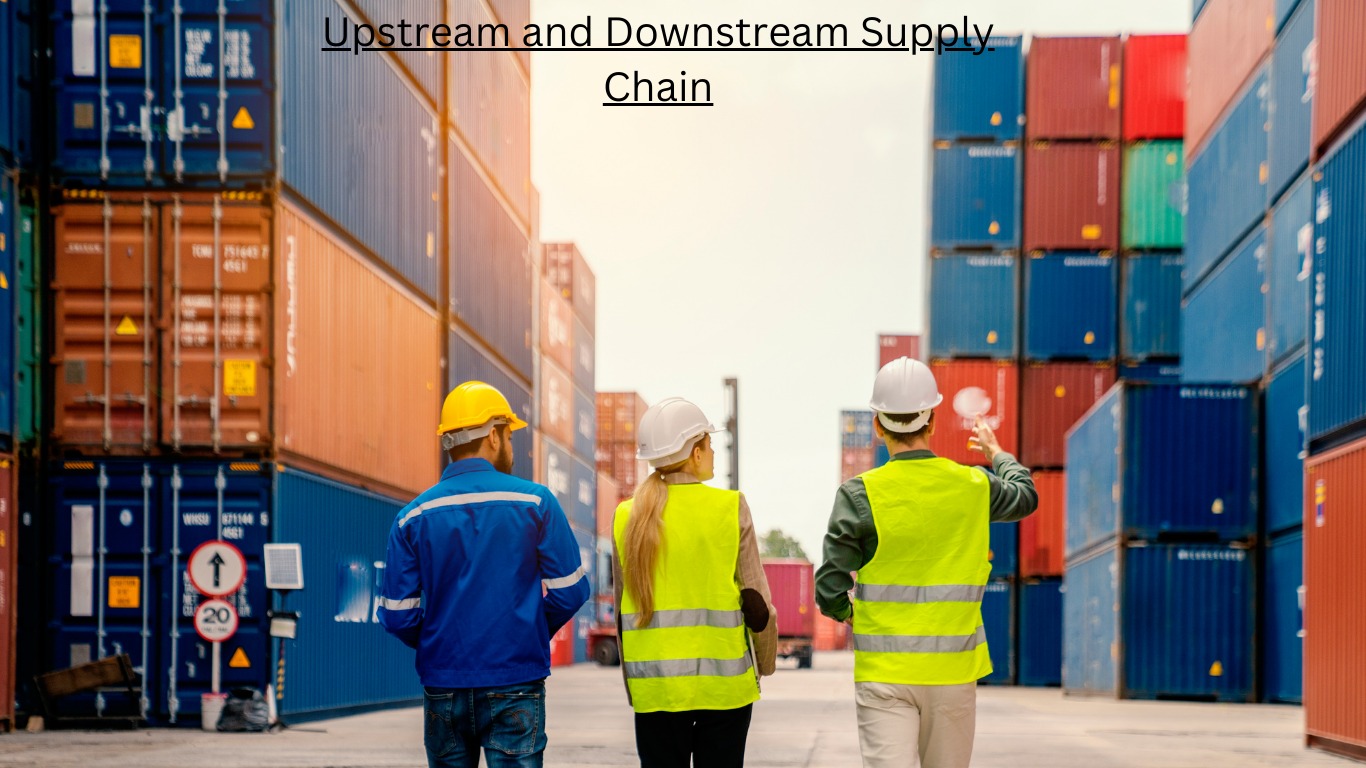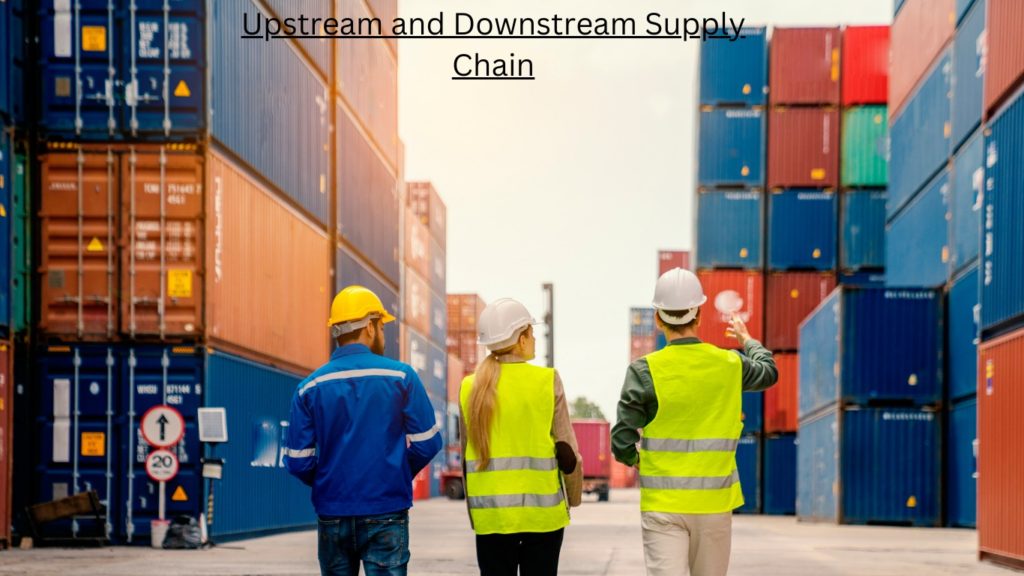In the supply chain, the upstream part involves finding and providing raw materials like plastics, wood, and metals to manufacturers. Managing these upstream tasks efficiently is important for quick production. If there are delays or shortages in raw materials, it can lead to lower inventory and more market ups and downs. Access to affordable raw materials can also give suppliers an edge.
The downstream part of the supply chain involves what happens after the product is made. This includes delivering goods to stores or online shops and finally to the customers. The process ends with the final customer, where all the information flow in the downstream supply chain wraps up.

What Is the Upstream Supply Chain?
The upstream supply chain involves the flow of materials needed to start the production process. This includes tasks like sourcing raw materials—such as plastics, wood, metals, and other specific components—and managing the costs required to produce goods efficiently.
These raw materials are vital to the global supply chain, and shortages can lead to lower inventory levels and greater market fluctuations. Securing affordable raw materials can give suppliers a competitive advantage.
Focusing on the upstream supply chain allows companies to ensure the quality of their finished products, keep a close eye on inventory levels, minimize the risk of running out of raw materials, and ultimately improve customer satisfaction.
What Are the Challenges in Upstream Supply Chain Operations?
The upstream supply chain, which involves working closely with suppliers, securing raw materials, and managing transportation, is key to keeping everything running smoothly. However, any issue in these areas can disrupt the entire process.
Challenges might include natural disasters, international trade problems, price increases, or workforce strikes. Whether caused by people or nature, anything that blocks the flow of resources can lead to delays in production and problems with inventory.
It’s also important to recognize that having too much or too little stock of raw materials can directly affect how efficiently products are made and how well customers are served.
How to Optimise Upstream Supply Chain Operations?
Since the upstream supply chain is the starting point of the entire process, it needs careful management to ensure everything that follows runs smoothly. To keep things efficient, companies should work with a variety of suppliers to avoid relying too much on just one, especially when demand changes with the seasons.
Additionally, using AI and machine learning-based software can help improve operations, increase visibility, and support better decision-making.
What is a Downstream Supply Chain?
The downstream supply chain encompasses the value chain segment involved in distributing finished products to consumers. This process includes distribution, order fulfillment, and last-mile logistics—crucial elements that drive peak customer satisfaction consistently.
It is inherently adaptive to shifting user demands and preferences, relying on a network of distributors and retailers to reach the intended audience.
Beyond its customer-centric approach, a downstream supply chain streamlines operations, enhances delivery speeds, optimizes order fulfillment, and facilitates responsive inventory management to prevent both overstock and understock scenarios.
What Are the Challenges in the Downstream Supply Chain?
The primary challenge in the downstream supply chain is ensuring the timely delivery of finished products to the target customer base. This involves maintaining visibility and coordination within the distributor network to ensure successful delivery rates and, in some cases, handling reverse transactions.
Leadership faces the challenge of meeting ever-increasing customer expectations for quicker order processing and multiple delivery options, including last-mile delivery.
How to Optimize Downstream Supply Chain Operations?
To enhance downstream supply chain operations, which heavily involve storage and transportation, leadership should invest in warehouse automation technology to improve stock management accuracy.
Implementing an Order Management System (OMS) can also reduce workflow errors and maintain order rates. Additionally, with the growing demand for same-day delivery, adopting an intelligent transport management system is essential for staying ahead in the competitive landscape.
Upstream vs. Downstream Supply Chain: Understanding the Difference
Upstream and downstream refer to different parts of a supply chain. The upstream part deals with getting and preparing raw materials and managing the supply base. The entire supply chain relies on these initial steps, as demand forecasting in the upstream process determines the availability and need for certain raw materials.
In contrast, downstream supply chain processes happen after manufacturing and involve distributing products to retail stores or online platforms, ultimately reaching the final customers. The flow of information in a downstream supply chain ends with the consumer.
Some companies manage both upstream and downstream processes, while others may handle only one part, working with partners for the other. A supply chain is most efficient and cost-effective when it has clear sourcing of materials, high-quality production, and smart marketing to deliver the final product to consumers.
How to Manage Upstream and Downstream Supply Chains?
Effectively managing the upstream and downstream supply chains relies on three key pillars. These flows often occur simultaneously, either in parallel, ascending or descending, or in tandem.
- Flow of Materials:
At first glance, this may seem like it covers the process from raw material procurement to the production of the finished product. However, the flow of materials also includes the reverse supply chain process, dealing with customer returns and exchanges within the specified timelines.
- Flow of Money:
The financial flow starts in the downstream supply chain and moves upstream. When customers pay for their orders, the retailer transfers the funds to the distributor, which then channels the payment to the manufacturer. Any delay in this financial transaction can create a domino effect, impacting the entire value chain and all its stakeholders.
- Flow of Information
In a parallel process, the flow of information enhances visibility in both upstream and downstream supply chains. Establishing strong communication channels with personnel from both processes ensures smooth collaboration and transparency.
FAQ: How to Navigate Upstream and Downstream Supply Chains:
Which supply chain function is the most upstream?
The most upstream supply chain function is raw material sourcing.
In which order does the upstream flow supply chain happen?
The upstream flow starts with raw material extraction, followed by production, and then moves to assembly and distribution.
What are the benefits of upstream?
Upstream benefits include cost control, quality improvement, and better management of raw materials, leading to more efficient production.
Conclusion
Efficiently managing the upstream and downstream supply chains is key to keeping operations smooth and satisfying customers. By controlling material flow, finances, and communication, companies can improve their supply chain performance. If you’re looking for more information on the supply chain industry, consider checking Qodenext out!







